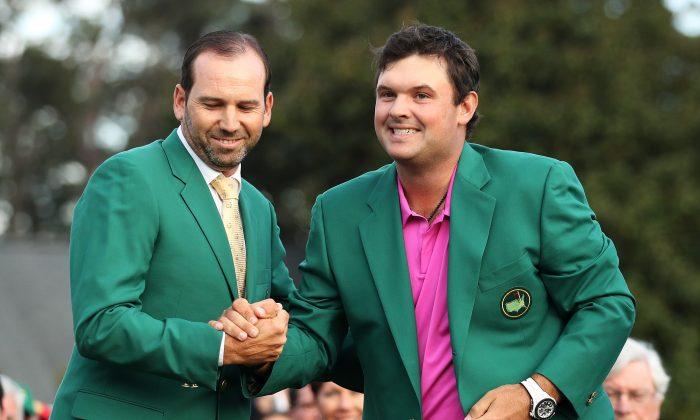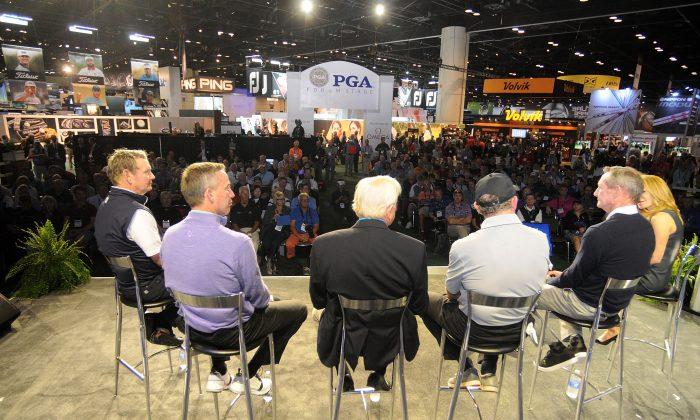Oakmont, PA—2016 marks my 30th U.S. Open in covering this year’s championship at Oakmont Country Club—the tour de force facility located just several miles north of downtown Pittsburgh, PA. The famed club serves a record 9th time as the host venue for the national championship of American golf. This marks the fourth time I have covered a U.S. Open from Oakmont—the earlier times coming in ‘83, ’94, and ‘07.
There are a number of key courses that have been host to the U.S. Open but in my mind only three are worthy in being among the elite trio—Pebble Beach, Shinnecock Hills and Oakmont. The aforementioned troika deserves to host the second oldest major at least once every ten years.
Oakmont has crowned notable winners of the USGA champions through the years—names such as Tommy Armour, Bobby Jones, Ben Hogan, Jack Nicklaus, Johnny Miller, Larry Nelson, Ernie Els, Angel Cabrera, Patty Sheehan and Paula Creamer are among its roster of superb champions. The lone unknown winner came in 1935 when Sam Parks won the National Open—the only competitor to break 300. But it was the 1973 U.S. Open that brought to center stage one of the most electric moments in all of championship golf. A 26-year-old golfer from California named Johnny Miller fired a record 8-under-par 63 in the final round to leapfrog a stellar leaderboard and claim the title.

Miller’s round was achieved in hitting all 18 greens in regulation—ending with just 29 putts. Although the number 63 has been matched numerous times since then, it is Miller’s that stands alone as the lowest find round to win a major championship. For the round to have been done at the always demanding and difficult Oakmont has only added to the allure of its accomplishment.
The UK-equivalent to Oakmont is Scotland’s Muirfield. Both layouts are exacting but will yield low scores with stellar play and each is blessed with a listing of champions that clearly ratifies the pedigree of the layouts.
Oakmont came into being as the sole design of Henry Clay Fownes—his first and only design. Construction began on Sept. 15, 1903 with a crew of men, horses, mules and scrapers.
Play began less than one year later on Oct. 1, 1904. Oakmont from the very beginning was built on one premise—reward only the finest of shots and punish with vengeance any shot (most especially putts) played even slightly indifferently. Befitting his Calvinistic-belief, Fownes believed forgiveness was something only The Creator could provide. “A shot poorly played should be a shot irrevocably lost,” and his famous companion thunder: “Let the clumsy, the spineless, the alibi artist stand aside!”
Oakmont’s ferocious reputation is not bolstered with a large body of water either next to it as with Pebble Beach or nearby like Shinnecock Hills. Oakmont is stark in its appearance—early on trees were few in number—in many ways the course resembled an interior links.
To bolster the design Fownes placed numerous bunkers at its height nearly 350 scattered about. That total now numbers 210. To complicate matters Fownes ingeniously—or cruelly—created a furrow instrument used to “rake” the bunkers. The furrow would often cause balls to find the crevice of its dastardly “V” area and make escape truly an art form. The United States Golf Association (USGA) banned their usage from greenside bunkers in the ‘62 event and eventually decided that in all future Opens at Oakmont, enough was enough and ended in totality their involvement.
Still, competitors had best avoid the well-known “church pews” bunkers straddling the 3rd and 4th holes as well as at the long par-4 15th. The pews are diabolical in their lethal character. Sand exists but it is a series of grass covered mounds positioned perpendicular to the line of play that can be nightmarish for any player hooking too far. Once you hit the church pews it is anything but a day at the beach and one had best received divine guidance to extricate oneself from their clutches.
Over the years the main issue for Oakmont to handle internally was the profusion of trees that accelerated throughout the property. Video footage from the ‘73, ’83 and ‘94 Opens shows an Oakmont choked with trees. Prior to the ’07 Open a movement took hold—at first only with a small group of senior leaders at the club who wanted to restore Oakmont as envisioned by its founder.
The removal of trees initially happened during evening hours and in the winter months—keeping most members unaware of the activities. Eventually, the plan was unearthed and possible litigation appeared likely until it was decided to proceed ahead. All told, approximately 7,500 trees were removed prior to the ‘07 Open and since that time a comparable amount has also been removed—primarily from the perimeter of the property. The vistas of the course are now totally exposed from the high point occupied at the clubhouse.

The teeth of Oakmont revolves around its devilish putting surfaces. Along with Oakland Hills/South and Winged Foot/West, the ones found at Oakmont are easily the swiftest and most vexing of its kind. The greens are kept ultra-fast even for regular member play and it’s no joke when members say the speed in which Open competitors play is actually slower than what they handle daily. The putting surfaces are angled to encourage only the most well-played of approaches. Often times there are specific holes where the green actually runs downhill from front-to-back—especially at the demanding 1st and 10th holes.
When people marvel at how Tiger Woods never hit a bunker when winning the ‘00 Open Championship at The Old Course at St. Andrews, equally impressive is the fact that ’62 Open champion Jack Nicklaus only had one three-putt green in 90 holes when vanquishing Arnold Palmer in their historic playoff. That is truly incredible when four and five putts are not uncommon.
Since the ‘07 event, there have been very few changes to the course. The back of the 6th green has been expanded so additional pin placements are now doable. At the long par-5 12th—measuring 667 yards, but still just the 2nd longest par-5 ever played in a U.S. Open—two new bunkers were removed and one expanded. The total yardage for the championship is 7,219 yards—11 fewer than what was played in ’07—with the par remaining 70 as the uphill 9th will once again play as a par-4 hole.
Given the inherent challenges Oakmont presents, the key will be in the overall course set-up. In the ‘83 event the off-fairway rough was so deep and dense that often times a simply wedge out was the only recourse. USGA Executive Director Mike Davis has been quite imaginative since becoming the point man for U.S. Open set-ups—starting with the ’06 event at Winged Foot / West.
The U.S. Open clearly elevated winner Jordan Spieth last year at Chambers Bay and reconfirmed his earlier Masters win in ‘15 was anything but a fluke. Oakmont is a relentless punishing test of golf -- it will not permit consistent wayward driving no matter how far players hit it today. The course will also force players to demonstrate extraordinary patience since unlike many PGA Tour events the wherewithal to avoid the big numbers will be essential since the course will not feature an endless supply of birdie opportunities.
After the newness of Chambers Bay and the uncertainty of what will happen in ‘17 when the U.S. Open ventures to another new site in Erin Hills in Wisconsin—the return of Oakmont to center stage is indeed most welcomed for what it is always done so well—define greatness.
M. James Ward, a member of Golf Writer’s Association of America (GWAA) and past member of Met Golf Writer’s Association (MGWA), has reported on golf’s grandest events since 1980 in a variety of forums.





Friends Read Free